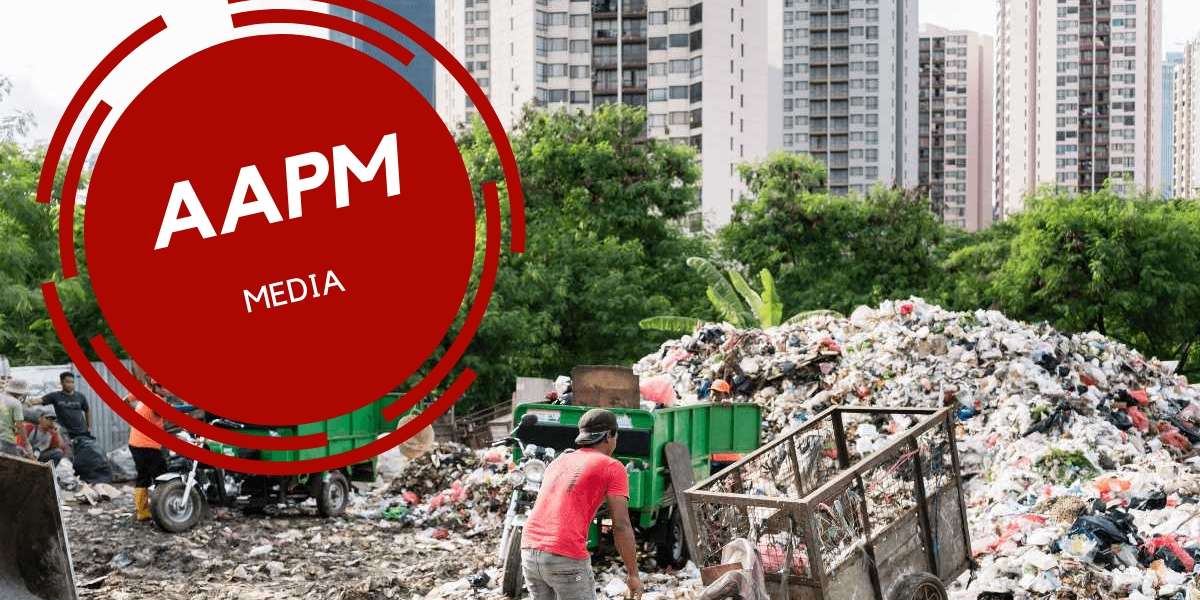Environmental monitoring and assessment play a critical role in the effective management of landfills and waste disposal sites. It involves the systematic collection, analysis, and interpretation of data to evaluate the impact of waste on the surrounding environment and human health. In Malaysia, environmental consultancy services provide expert guidance and technical expertise to ensure compliance with regulatory requirements and the adoption of sustainable waste management practices.
Environmental monitoring involves the continuous measurement and evaluation of air quality, water quality, soil contamination, and noise levels in and around waste disposal sites. This monitoring helps identify potential risks and enables the implementation of appropriate measures to mitigate them.
Environmental assessment, on the other hand, focuses on the comprehensive evaluation of the environmental impacts associated with waste disposal operations. It considers factors such as the potential for soil and groundwater contamination, emissions of greenhouse gases and other pollutants, and the impact on flora and fauna.
By conducting regular monitoring and assessments, environmental consultancy services help landfill operators and waste management companies identify and address potential issues. They ensure that waste is managed in a manner that protects the environment, minimizes health risks, and promotes sustainable practices.
In Malaysia, environmental consultancy firms have solid experience in waste management and possess the technical expertise required to address the unique challenges posed by landfills and waste disposal sites. They play a crucial role as trusted advisors to waste management operators, offering guidance on regulatory compliance, conducting assessments of waste management operations, and assisting in the development of sound sustainability reports.
Overview of Landfills and Waste Disposal Sites
Landfills and waste disposal sites are essential components of waste management systems, serving as designated areas for the disposal and containment of solid waste. These facilities play a crucial role in maintaining public health and environmental sustainability.
Environmental Impact
Landfills and waste disposal sites have both direct and indirect impacts on the environment. The improper management and operation of these facilities can result in adverse consequences for the surrounding ecosystems and communities.
- Soil Contamination: Landfills can lead to soil contamination due to leachate, which is the liquid that seeps from the waste. Leachate contains various pollutants that can percolate into the soil, resulting in the contamination of nearby groundwater.
- Air Quality: Waste decomposition in landfills generates gases such as methane, carbon dioxide, and volatile organic compounds (VOCs). Methane is a potent greenhouse gas, contributing to climate change, while VOCs can contribute to air pollution and the formation of smog.
- Health Risks: Improperly managed landfill sites can pose health risks to nearby communities. The release of hazardous substances, such as heavy metals and organic pollutants, from the waste can contaminate air, soil, and water sources, potentially leading to adverse health effects.
Potential Risks
Various risks are associated with landfills and waste disposal sites due to their potential for environmental contamination and public health hazards. It is crucial to understand and address these risks to mitigate their impacts effectively.
- Leachate Contamination: The release of leachate from landfills can contaminate nearby water sources, including rivers, lakes, and groundwater reservoirs. This contamination can result in harmful effects on aquatic ecosystems and human populations that depend on these water sources.
- Odor and Nuisance: The decomposition of organic waste in landfills can produce foul odors that can cause discomfort to nearby residents. Odor nuisance can have a detrimental impact on the quality of life and well-being of local communities.
- Land Use Constraints: The establishment of landfills and waste disposal sites often requires significant land areas. This can limit alternative land use options and affect the development potential of surrounding areas.
Regulatory Framework and Government Agencies
In Malaysia, waste management practices are regulated by various government agencies to ensure compliance with environmental standards and protect public health. The regulatory framework consists of laws, policies, and guidelines that outline the responsibilities and obligations of waste disposal operators.
Environmental Quality Act (EQA)
The Environmental Quality Act (EQA) serves as the primary legislation for environmental protection in Malaysia. Under the EQA, the Department of Environment (DOE) is responsible for regulating and monitoring waste management activities. They enforce the various regulations and guidelines related to waste disposal, pollution prevention, and environmental impact assessments.
Solid Waste and Public Cleansing Management Act 2007 (SWPCMA)
The Solid Waste and Public Cleansing Management Act 2007 (SWPCMA) focuses specifically on solid waste management and aims to promote sustainable waste management practices. The National Solid Waste Management Department (NSWMD) implements and enforces the provisions of the SWPCMA, ensuring that waste disposal practices comply with the law and meet environmental standards.
State and Local Authorities
In addition to federal agencies, state and local authorities also play a crucial role in waste management oversight. District councils and local authorities are responsible for waste collection, segregation, and disposal within their respective jurisdictions. They work closely with waste management operators, industry stakeholders, and communities to ensure proper waste management practices are implemented.
Involvement of Government Agencies
Government agencies, including the DOE and NSWMD, conduct regular inspections and audits to assess waste disposal facilities' compliance with environmental regulations. They monitor waste treatment processes, assess the impacts on air and water quality, and enforce penalties for non-compliance. The government agencies also provide guidance and support to waste management operators to improve their practices and adhere to regulatory requirements.
By establishing a robust regulatory framework and involving multiple government agencies, Malaysia aims to ensure the safe and sustainable management of waste disposal sites. The collaboration between federal, state, and local authorities contributes to the overall effectiveness of waste management practices while safeguarding the environment and public health.
Role of Environmental Consultancy
Environmental consultancy plays a crucial role in waste management operations, providing expert guidance, technical expertise, and customized solutions. These consultancy services are instrumental in ensuring compliance with regulatory requirements and implementing sustainable practices for waste disposal.
Expert Guidance and Technical Expertise
Environmental consultancy firms offer solid experience and vast expertise in the field of waste management. They have a deep understanding of the regulatory requirements set by various government agencies, allowing them to navigate the complex landscape of waste disposal management. These consultants possess the knowledge and skills necessary to assess the operational phases of waste management projects, from planning to implementation.
Environmental consultants act as trusted advisors, assisting businesses and organizations in adhering to the regulatory framework and adopting the best practices for waste management. They provide comprehensive assessment of waste management operations, identifying potential issues and offering effective solutions. By leveraging their technical expertise, these consultants help minimize risks and ensure the appropriate handling, treatment, and disposal of waste materials.
Customized Solutions
Every waste management operation is unique, and environmental consultancy services recognize this by offering tailored solutions to address specific challenges. Consultants work closely with clients to understand their respective business premises, industry sectors, and operational requirements. This allows them to develop customized waste management strategies that align with the goals and objectives of the organization.
From waste minimization studies to recycling initiatives, environmental consultants provide practical recommendations to optimize waste management practices. By incorporating innovative technologies, such as carbon management and renewable energy generation, they help clients achieve sustainable waste disposal while minimizing environmental impact.
Ensuring Regulatory Compliance
Environmental consultants are well-versed in the regulatory requirements enforced by government agencies and local authorities. They ensure that waste management practices align with the policies set by district councils and other relevant governing bodies. These consultants provide assistance in obtaining necessary permits and licenses, ensuring that waste disposal operations comply with health and safety regulations.
In addition, environmental consultants play a vital role in community engagement. They help organizations establish effective communication channels with the local community, addressing concerns and building trust. By involving the community in waste management decision-making processes, consultants foster collaboration and enhance the overall social management of waste disposal sites.
Environmental Risk Assessment at Landfills
Environmental risk assessment plays a crucial role in evaluating and managing the potential risks associated with landfills. By understanding the factors that influence environmental risk assessment at landfill sites, we can develop effective strategies to mitigate and prevent environmental hazards. In this section, we will explore some key factors that are taken into consideration during the assessment process.
Soil Contamination
Soil contamination is one of the primary concerns when assessing environmental risks at landfills. The disposal of hazardous waste, chemicals, and pollutants can lead to the contamination of soil, posing a threat to ecosystems and human health. The assessment evaluates the extent of soil contamination and identifies the appropriate remediation techniques to ensure the safe and sustainable management of waste disposal sites.
Air Quality
Landfills can emit various gases and volatile organic compounds (VOCs) that can negatively impact air quality. These emissions can contribute to the formation of air pollutants such as methane, carbon monoxide, and hazardous air pollutants. Environmental risk assessment assesses the potential emission sources, monitors air quality parameters, and identifies measures to control and reduce air pollution from landfill sites.
Potential Health Hazards
The proximity of landfills to residential areas raises concerns about potential health hazards for nearby communities. The assessment considers the potential risks associated with exposure to pollutants and contaminants, such as respiratory problems, skin irritations, and long-term health effects. It aims to identify measures to protect public health and ensure the well-being of individuals residing in the vicinity of landfill sites.
Surface Water and Groundwater Contamination
Improper waste disposal practices can result in the contamination of surface water bodies and groundwater resources. Environmental risk assessment evaluates the potential pathways of contaminants and their impacts on water quality. It assesses the effectiveness of containment systems, liner designs, and monitoring programs to prevent the migration of pollutants into water sources.
Biodiversity and Ecological Impacts
Landfills can have significant impacts on local biodiversity and ecosystems. The assessment examines the potential ecological consequences of landfill operations, including habitat loss, changes in species composition, and disruption of ecological processes. It identifies strategies to minimize ecological impacts and promote biodiversity conservation in and around landfill sites.
Through a comprehensive environmental risk assessment, we can gain insights into the potential risks associated with landfill sites and develop strategies to mitigate these risks effectively. By carefully evaluating soil contamination, air quality, potential health hazards, water contamination, and ecological impacts, we can ensure the sustainable management of waste disposal sites and protect the surrounding environment and communities.
Community Engagement and Local Authority
Community engagement and the involvement of local authorities play a vital role in waste management decision-making processes. As waste disposal sites and landfills directly impact the surrounding communities and the environment, it is crucial to ensure that the concerns and interests of the local residents are taken into account. Effective community engagement fosters transparency, trust, and collaboration between the stakeholders, resulting in better waste management outcomes.
The Importance of Community Engagement
Engaging with the local community helps in understanding their needs, concerns, and expectations regarding waste management. It creates a platform for open dialogue and allows for the exchange of ideas and knowledge. By involving the community, waste management initiatives can align with their preferences and values, leading to increased acceptance and support for such projects.
Role of Local Authorities
Local authorities, such as district councils and the local government, play a significant role in waste management decision-making. They are responsible for enforcing regulations, setting policies, and ensuring compliance with waste management standards. Local authorities work closely with environmental consultancies and waste operators to develop strategies that address the waste management challenges in their respective areas.
Waste Management Decision-Making Processes
The involvement of local authorities in waste management decision-making processes ensures that the interests of the local community are represented. They evaluate waste management proposals, assess their environmental and social impacts, and make informed decisions based on the best interests of the community. Local authorities also work towards educating the public about waste reduction, recycling, and proper waste disposal practices.
Collaborative Approach
To achieve successful waste management outcomes, community engagement and local authority involvement should be based on a collaborative approach. This includes regular communication, public meetings, and consultation sessions to gather feedback, address concerns, and provide updates on waste management projects. Collaboration between the local authorities, environmental consultancies, and the community ensures that waste management efforts are comprehensive, sustainable, and responsive to the needs of all stakeholders involved.
Best Practices for Environmental Monitoring
Environmental monitoring is a vital aspect of ensuring the effective management of landfills and waste disposal sites. By implementing best practices for monitoring and assessing environmental impacts, we can minimize risks, protect ecosystems, and safeguard community health. Here are some key strategies to follow:
- Comprehensive Site Characterization
Before initiating any monitoring program, it is essential to conduct a thorough site characterization. This involves evaluating the geological, hydrological, and biological aspects of the landfill site. By understanding the specific characteristics of the site, we can tailor monitoring plans accordingly, ensuring accurate data collection and analysis.
- Regular Sampling and Analysis
Regular sampling of environmental media such as groundwater, surface water, soil, and air is crucial to assess the impact of waste disposal activities. The sampling frequency should be based on site-specific factors and regulatory requirements. Analysis of samples should be conducted using reliable testing methods and accredited laboratories to ensure the accuracy and validity of results.
- Focused Parameters and Indicators
Identifying the most relevant parameters and indicators is crucial to monitor the specific environmental impacts associated with landfill operations. This may include monitoring parameters such as pH, heavy metals, organic contaminants, landfill gas emissions, and leachate quality. By focusing on key indicators, we can efficiently track changes and detect potential environmental risks.
- Continuous Monitoring Systems
Implementing real-time, continuous monitoring systems can provide valuable data on landfill operations and help identify potential issues promptly. These systems can include air quality monitoring stations, groundwater monitoring wells with automated sensors, and landfill gas monitoring equipment. Continuous monitoring enhances early detection and allows for immediate corrective actions if necessary.
- Quality Assurance and Quality Control
Ensuring the accuracy and reliability of monitoring data is essential. Quality assurance and quality control protocols should be implemented throughout the monitoring process. This includes proper calibration of monitoring equipment, adherence to standardized procedures, and regular internal and external audits. By maintaining high-quality data, we can make informed decisions and provide reliable information to stakeholders.
- Utilization of Advanced Technologies
Incorporating advanced technologies and data analytics can enhance the efficiency and effectiveness of environmental monitoring programs. For example, remote sensing techniques, such as aerial imagery and satellite monitoring, can provide valuable insights on vegetation health and land use changes. Additionally, geographic information systems (GIS) can assist in data management and spatial analysis.
- Stakeholder Engagement and Communication
Effective stakeholder engagement and communication are essential for successful environmental monitoring. Engaging with local communities, regulatory agencies, and other relevant stakeholders fosters transparency, builds trust, and ensures that monitoring efforts address their concerns. Regular communication through public meetings, stakeholder forums, and clear reporting mechanisms can facilitate open dialogue and promote collaboration.
Innovative Solutions for Waste Management
Ensuring effective waste management practices is crucial for minimizing the environmental impact of landfills and waste disposal sites. In recent years, innovative solutions and technologies have emerged to address the challenges associated with waste management. By adopting these advancements, we can achieve more sustainable and efficient waste disposal processes. This section explores two key innovative solutions for waste management: carbon management and renewable energy generation.
Carbon Management
Carbon management is an essential aspect of contemporary waste management practices. It involves strategies and techniques aimed at reducing greenhouse gas emissions from waste disposal operations. By implementing carbon management measures, waste management facilities can significantly contribute to mitigating climate change.
One such approach is landfill gas capture and utilization. Landfills produce significant amounts of methane gas, a potent greenhouse gas. Through the installation of gas collection systems, methane emissions can be captured and utilized as a valuable energy source. The captured methane can be converted into electricity or used for heating purposes, reducing the reliance on fossil fuels.
In addition to landfill gas utilization, waste-to-energy technologies play a key role in carbon management. These technologies involve the conversion of waste materials into renewable energy sources, such as biofuels or biogas. By diverting waste from landfills and utilizing it for energy production, we can minimize both environmental pollution and reliance on non-renewable energy sources.
Renewable Energy Generation
Renewable energy generation is another important aspect of sustainable waste management. Various technologies can be applied to convert waste into renewable energy sources, reducing the dependence on fossil fuels and promoting cleaner energy alternatives.
One example is anaerobic digestion, a process that breaks down organic waste materials to produce biogas. Biogas, which primarily consists of methane, can be used as an alternative energy source for electricity production or as a fuel for vehicles. This method not only provides renewable energy but also reduces the volume of organic waste that would otherwise end up in landfills.
Additionally, waste-to-energy incineration plants can be utilized to generate electricity from non-recyclable waste streams. These facilities utilize advanced combustion technologies to convert waste into heat, which is then used to generate steam and drive turbines for electricity production. Properly designed and regulated incineration plants can significantly reduce the volume of waste and generate clean energy simultaneously.
By incorporating carbon management techniques and renewable energy generation into waste management practices, we can minimize the environmental impact of landfills and waste disposal sites while simultaneously promoting sustainable and efficient waste handling.
Conclusion
Environmental monitoring and assessment are pivotal in maintaining sustainable waste disposal practices at landfills and waste disposal sites. Throughout this article, we have explored various aspects of environmental consultancy in Malaysia and the crucial role it plays in waste management operations.
By adhering to regulatory requirements set by government agencies and engaging with expert environmental consultants, organizations can ensure compliance and mitigate potential risks associated with waste management. The assessment of factors such as soil contamination, air quality, and health hazards is essential in effectively managing landfill sites.
Community engagement and the involvement of local authorities are also crucial in making informed waste management decisions. Implementing best practices for environmental monitoring and assessment, including continuous monitoring of environmental impacts, allows organizations to identify and address issues promptly.







